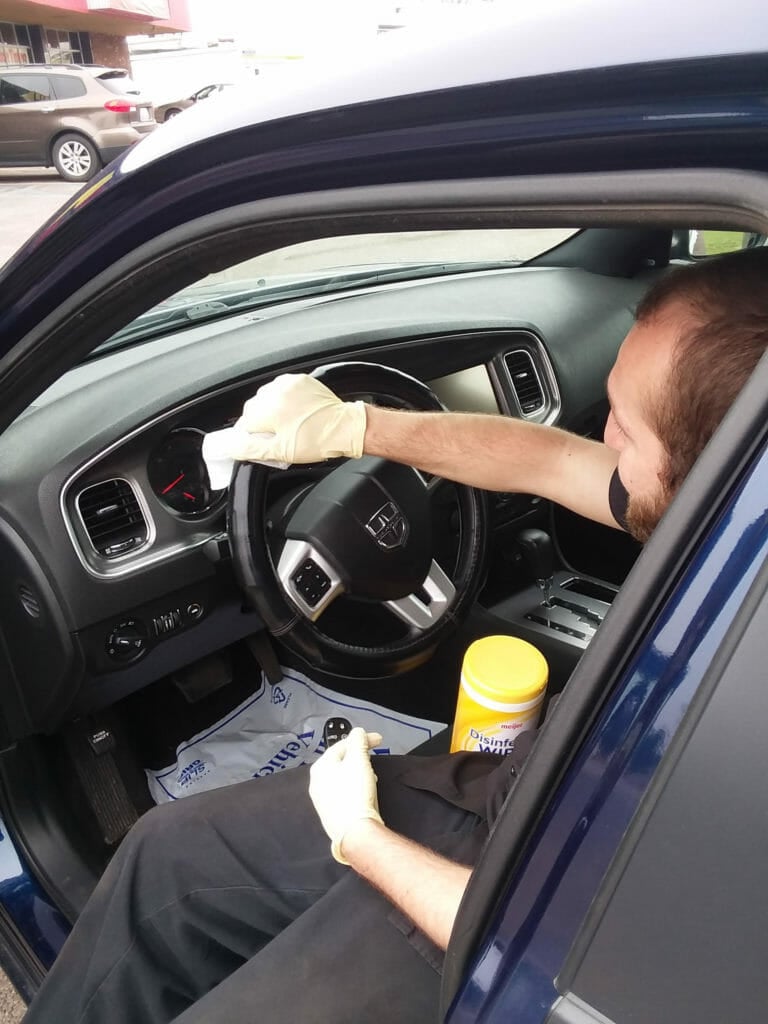The Cost of Keeping Your Auto Shop Clean during COVID-19

During the initial panic over the dangers the coronavirus posed, most people focused on basic survival issues. They worried about getting sick, raced to stock up on food, and dealt with the changes lockdowns and quarantines forced on their families and workplaces. Now that the first phase of the epidemic is over, we are all dealing with its secondary effects, especially those it has on the economy and how businesses operate. One of the issues auto shop owners face now is how to ensure their space is clean and safe for workers and customers. This is going to be an additional, unwelcome cost for the indefinite future.
Disinfecting Buildings
The Centers for Disease Control has its recommendations about how to keep facilities clean and disinfected so that COVID-19 does not spread. This is no mean feat. It’s one thing to tell employees to wash their hands and don’t come to work when they are sick. It’s another to actually eliminate germs. Since they are invisible and sick people are often asymptomatic, the general consensus is that continuous cleaning and sanitizing is the way to fight this virus. Given the danger it poses, it’s best to just keep cleaning, cleaning, cleaning.
Auto shops have people coming in and out all the time, both customers and employees. If they continue to allow them inside the building, no matter what they do, it will never be sterile. They can’t remain open without their employees, but some shops are refusing to allow customers inside the door. Others are allowing them in but encouraging them not to linger or wait for their vehicle to be finished by removing chairs from the waiting area.
Many customer service areas for other frontline industries have installed plexiglass or put up signs indicating how far apart people in line should stand from each other. Auto repair work has another intrusive aspect that relates to contagion, however. In order to repair people’s cars, techs have to actually get inside them and touch the seats, the steering wheels, stick shifts, and handles. This means that as a safety precaution, those areas should be wiped down after the car has been repaired. There is no cost effective way to completely sanitize a car interior, of course.
COVID-19 Cleanup
If a tech or another auto repair worker does get sick with COVID-19, the auto shop has problems beyond staffing. The entire shop could be considered contaminated. Some businesses, like the recently closed meat processing plants, are calling in experts to clean and decontaminate their facilities when their workers get sick. The market for biohazard cleanup services in a typical year is between $700 and $800 million. It’s expected to double in 2020. Few shops can afford to pay $750 per hour to clean up after a worker gets sick. Will they do the best they can and call it good enough? How will they dispose of the paper towels, rags, gloves, and other PPE after they are done?
When the coronavirus abates, proving that their facilities are clean and safe will continue to be an issue for owners and managers. Some will be more hesitant to open their shops fully until authorities deem it “safe,” if only to minimize liability or risk. Some customers will want to continue with distancing techniques they learned during the lockdowns. Questions will crop up like, “When do we stop wiping down the chairs hourly?” Or: “When can we take the plexiglass down?” These are difficult to answer.
We are in uncharted territory as both people and auto repair workers dealing with this crisis. It can be helpful to share information and ideas to get an idea of what the best way to deal with these new challenges is. The Automotive Management Network currently has a poll running asking if your auto shop is letting customers inside during the COVID-19 epidemic. We want to know this, as well as any experience you have keeping your shop clean or dealing with concerns of your staff and customers. Take our survey here and please leave your comments either here or in our forums.


Responses